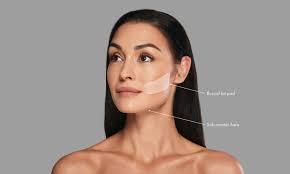
What Is Buccal Fat Removal? A Complete Guide to the Trendy Cheek-Slimming Procedure
Buccal fat removal is a cosmetic surgery that’s grown popular on social media. It reshapes the face by removing fat from the cheeks to create a slimmer, more defined look.
This procedure is also called a bichectomy or bichectomia. The name comes from “buccal fat pads,” which are small pockets of fat inside your lower cheeks.
If your face looks naturally full or rounded, buccal fat may be the reason. Removing it can give your face a more sculpted, contoured appearance.
Why Is Buccal Fat Removal Trending?
Posts tagged with #buccalfatremoval have gained over 140 million views on TikTok. The trend is hot across Instagram, Twitter, and Facebook too.
Some of the buzz comes from rumors about celebrities having the procedure, including Bella Hadid and Dove Cameron. Though most haven’t confirmed it, fans continue to speculate.
Because of its popularity in Hollywood, some people call this surgery “Hollywood cheek.”
What Are Buccal Fat Pads?
Buccal fat pads are located between your cheekbones and jawbones. They give shape to your face, especially in the lower cheeks.
Everyone has them, but the size of these fat pads varies from person to person. If yours are larger, your cheeks may appear fuller or rounder.
What Does Buccal Fat Removal Do?
Buccal fat removal targets these pads and removes part or all of them. By doing so, the face takes on a more hollowed or chiseled look.
This can bring out the natural contours of your cheekbones and jawline, especially when the rest of your facial structure is already defined.
Who Might Want Buccal Fat Removal?
People often seek this procedure if they feel their face looks too round or “baby-faced.” They want a sharper, more mature-looking profile.
The surgery helps highlight cheekbones and can make the face look slimmer. It’s especially appealing to people with full cheeks and a youthful facial shape.
According to dermatologists, it’s most popular among people in their 20s and 30s. That’s when the face still has natural fat volume and elasticity.
What Happens During the Procedure?
Buccal fat removal is usually done in a medical office or outpatient clinic. It typically doesn’t require a hospital stay.
Doctors usually use a local anesthetic to numb the area. You’ll be awake but won’t feel pain during the procedure.
The surgeon makes a small cut inside your mouth, near your upper molars. This gives access to the fat pads without leaving visible scars.
Next, the doctor gently presses the cheek to push the fat pad out of place. Then they trim or remove it, depending on the desired result.
Finally, they close the incision with stitches. Some stitches dissolve on their own, while others may need to be removed later.
The entire process usually takes 30 to 60 minutes per side.
What Is Recovery Like After Buccal Fat Removal?
Most people can return home the same day. You’ll need a few days to rest, though full recovery may take up to three weeks.
Swelling and mild bruising are common. These side effects fade within a couple of weeks.
You may be told to rinse with a special mouthwash to prevent infection. Soft foods are recommended for a few days to avoid irritating the area.
You should avoid smoking, strenuous exercise, or touching the area inside your mouth while healing.
When Will You See Results?
While initial changes can be seen within a few weeks, it may take 3 to 6 months for the final results to fully appear.
That’s because swelling needs to go down completely for the new facial contours to be visible.
Who Is a Good Candidate for Buccal Fat Removal?
Not everyone is a suitable candidate. Ideal patients are healthy, at a stable weight, and do not smoke.
It works best for people with naturally fuller cheeks. If your face is already slim, removing cheek fat may make you look too hollow or gaunt.
Doctors often warn that buccal fat removal isn’t ideal for older adults. As we age, we naturally lose facial fat, which can make the face look more sunken.
Removing fat from aging faces may exaggerate these effects and lead to an overly “skeletonized” appearance.
Why Do Some Patients Regret the Procedure Later?
Doctors say some patients who had the surgery when they were younger later return for fillers. They want to restore volume to the same area where fat was removed.
This is because, with age, we lose fat in the face naturally. Having less fat to begin with can make the face look aged more quickly.
That’s why it’s important to consult a professional and consider the long-term effects before choosing this surgery.
Are There Risks Involved?
Like any surgery, buccal fat removal carries some risks. Most are minor, but some may be more serious.
Common side effects include:
Swelling and bruising
Numbness near the incision site
Mild pain or discomfort
Possible complications include:
Infection at the incision
Injury to facial nerves
Damage to the salivary ducts
Asymmetry, where one side heals differently than the other
More serious symptoms like fever, facial imbalance, or difficulty breathing require medical attention. In rare cases, you should call 911 or visit an emergency room.
How Much Does Buccal Fat Removal Cost?
Because it’s a cosmetic procedure, insurance doesn’t usually cover it. You’ll likely need to pay out of pocket.
Prices vary based on the surgeon, location, and clinic. According to GoodRx, the cost can range from $5,000 to $20,000.
It’s smart to consult more than one board-certified surgeon to compare costs and experience before making a decision.
Are There Non-Surgical Alternatives?
Yes, you can slim your cheeks or contour your face without surgery. Some non-invasive options include Botox and dermal fillers.
Injecting Botox into the masseter muscles can slim the lower face and soften a square jawline.
Facial fillers, like hyaluronic acid, can be used to sculpt the cheeks or jawline. This can create the illusion of a more defined face.
Unlike surgery, these treatments are temporary and usually need to be repeated every few months to maintain results.
They also carry fewer risks and require little to no downtime.
Which Option Is Right for You?
If you want long-lasting results and are willing to undergo surgery, buccal fat removal might be a fit.
But if you prefer a reversible or low-risk approach, facial injections may be better for you.
Discuss your goals with a board-certified dermatologist or plastic surgeon to find the safest, most effective choice.
How to Find a Qualified Surgeon
To protect your health and get the best results, always choose a board-certified plastic surgeon.
You can search for certified professionals in your area through the American Society of Plastic Surgeons website.
Make sure to read reviews, view before-and-after photos, and schedule consultations to ask questions.
Don’t be afraid to get a second opinion before deciding.
Final Thoughts
Buccal fat removal is one of the trendiest cosmetic procedures today. It promises a sharper jawline and a more sculpted face.
But like any cosmetic surgery, it carries risks and isn’t right for everyone. Results are permanent, so think carefully before going forward.
If you’re unsure, you can explore non-surgical options first to see if you like the look.
The most important step is working with a qualified medical professional. They can guide you safely toward the results you want—now and in the future.


